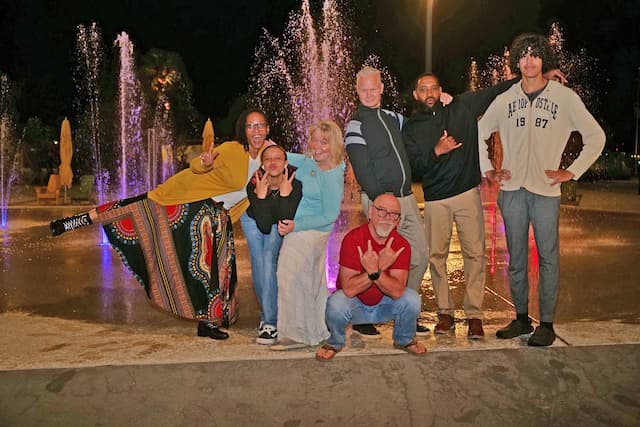Of horseshoe crabs and barnacles

By Elizabeth Prata
I love looking at God’s creation and praising Him for it. Job 38-42 has an extended treatment on creation spoken of by God Himself.
When I was a pagan, I saw His creation and I wondered about it. I wondered how it got here, why it was so orderly, and who made it. It was obvious earth was made. So…who?
For the wrath of God is revealed from heaven against all ungodliness and unrighteousness of people who suppress the truth in unrighteousness, 19 because that which is known about God is evident within them; for God made it evident to them. 20 For since the creation of the world His invisible attributes, that is, His eternal power and divine nature, have been clearly perceived, being understood by what has been made, so that they are without excuse. (Romans 1:18-20).

During the time I was living on my sailboat and cruising up and down the eastern seaboard and across to the Bahamas, I decided to make a scientific study of mollusks, all the shells and animals that lived in them, since we spent so much time beachcombing.
I challenged myself to look at the form of the shell and see what function it may have served- like angel wings are tall and skinny with a delicate shell so you know they aren’t going to be tossed around in the surf. In fact they drill down in soft sand and the sand protects the shell from breakage. A moon snail is round and thick so it can take being tossed in the surf.
I learned along the way that barnacles have a super cement that man can’t figure out how to reproduce, but that hasn’t stopped the Navy from trying. They have been trying for a long time to figure out what’s IN that glue to make barnacles soooo adhesive to hulls of ships! They are still trying.
You see, barnacle cement is interesting because it cures underwater, without the need for air drying, and is able to bind to materials with a wide range of textures. It is composed mostly of proteins (70%) and extrudes it from underneath its base plate to the surface below, (think, squeezing grout from between your teeth) and cures within a matter of hours. Once attached it is nearly impossible to get it off. The Navy really, really wants to know how a barnacle does that.
Its cement is among the most powerful natural glues known — with a tensile strength of 5,000 lbs per square inch and an adhesive strength that has been measured at 22 – 60 lbs per square inch. And that’s just barnacles. Blue mussels know how to make 21 different kinds of adhesives. That’s a quote from the Office of the Naval Research, btw. They are really interested both in getting rid of barnacles from their ships and learning how to make the cement for themselves.
Barnacles drag the boat, slowing it down. Often during our sailing journey we had to swim and dive around our boat with a chisel and chip those critters off the hull. Any time we docked for more than a few days the hull would have barnacles on them when we left.
Also, speaking of a wonderful created order, when we visited Woods Hole Oceanographic Lab we learned that horseshoe crabs have a kind of blood that clots instantly when encountering toxins or bacteria. See, in the 1960’s, “Dr. Frederik Bang, a Johns Hopkins researcher working at the Marine Biological Laboratory in Woods Hole, Massachusetts, found that when common marine bacteria were injected into the bloodstream of the North American horseshoe crab, Limulus polyphemus, massive clotting occurred.” (Source) What? We humans need that!
Woods Hole Lab reported, “seawater is a virtual “bacterial soup”. Near-shore areas where the horseshoe crab lives can easily contain over one billion bacteria per milliliter of seawater. That’s a lot. So the horseshoe crab is constantly threatened with infection. Such bacteria do not affect us humans because we have an immune system. The horseshoe crab doesn’t. It doesn’t spontaneously develop antibodies to fight infection like humans can. But the horseshoe crab does have a number of compounds that will bind to and inactivate bacteria, fungi, and viruses.
Cool, so though horseshoe crabs have no immune system they can combat bacteria! How is horseshoe blood used today you might ask? So glad you asked! “The horseshoe crab plays a vital, if little-known, role in the life of anyone who has received an injectable medication. An extract of the horseshoe crab’s blood is used by the pharmaceutical and medical device industries to ensure that their products, e.g., intravenous drugs, vaccines, and medical devices, are free of bacterial contamination. No other test works as easily or reliably for this purpose.” (Source: Audubon). No other man-made test works like the natural horseshoe crab blood!
God is great! And He made a crab that is not going to win any beauty contests but has within its blood hidden gems!
I am in awe at God’s creation and how perfectly he created every living thing.
By the word of the LORD the heavens were made, And by the breath of His mouth all their lights. He gathers the waters of the sea together as a heap; He puts the depths in storehouses. Let all the earth fear the LORD; Let all the inhabitants of the world stand in awe of Him. For He spoke, and it was done; He commanded, and it stood firm. (Psalm 33:6-9)










